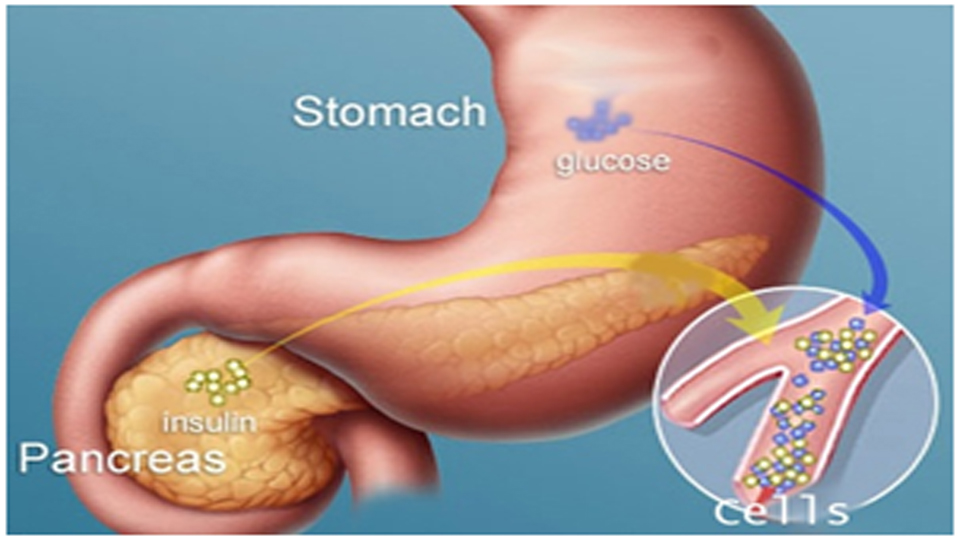Bolgs Detail

Diabetes mellitus
As per World Health Organization (WHO), Diabetes mellitus (DM) is growing rapidly and has already acquired a status of an epidemic. The number of people with diabetes has risen from 108 million in 1980 to 422 million in 2014. In 2016, an estimated 1.6 million deaths were directly caused by diabetes. Almost half of all deaths attributable to high blood glucose occur before the age of 70 years. WHO estimates that diabetes was the seventh leading cause of death in 2016.
Diabetes mellitus (DM), commonly known as diabetes, is a group of metabolic disorders characterized by high blood sugar levels over a prolonged period. Symptoms of high blood sugar include frequent urination, increased thirst, and increased hunger. There are two main types of diabetes: Type 1 and Type 2. When insulin is not produced in sufficient quantity by cells of pancreas (beta cells) gland, blood sugar remains high and the condition is called Type I diabetes mellitus. In Type II diabetes (adult onset diabetes), the pancreas makes insulin, but it either doesn't produce enough, or the insulin does not work properly. Long term complications of diabetes include blindness, kidney failure, heart attacks, stroke and lower limb amputation.
Prameha or Madhumeha was well known as a complicated disease entity to the Ayurveda physicians since thousands of years and they have been treating and managing the disease since thousands of years. According to Ayurvedic texts frequent urge to pass urine (which may be excessive) is the cardinal feature of Prameha. Three types of Prameha have been described based on Doshika predominance.
Thus Ayurveda has a long history of managing this so called dreaded disease named Diabetes. Although Insulin was not available earlier, there were methods which could indigenously promote the secretion of insulin from within the system. Moreover it is only 5 to 7 % of Insulin dependent diabetics (IDDM, Type 1) who need Insulin. Panchakarma and other Ayurvedic methods are of a great help in reduction in the dose of Insulin, as also in treating successfully Type 2 Diabetics in those who are above the age of 25 years.
Ayurvedic Treatment of Diabetes mellitus:
For the treatment purpose, Prameha patients are categorized in two general groups, those who are strong and obese and those who are weak and emaciated. For the former category of people Shodhan (detoxification) therapy is used, while for the latter, Brihan therapy (providing strength) is followed. The overall management modalities can be categorized as:
- Vyaayam (Exercise),
- Pathya (dietary regulation),
- Panchakarma (Bio-purification procedures) and
- The use of therapeutic measures (different herbal combinations)
The herbs used in the management of Prameha are bitter, astringent and pungent in taste.
Complications of Diabetes mellitus:
Diabetic retinopathy (affects eye site and can lead to blindness), Diabetic neuropathy (affects nerves, can cause numbness, tingling sensation and also responsible for diabetic foot ulcers and erectile dysfunction), Diabetic nephropathy (affects kidney functions, can lead to kidney failure) are main long term complications of diabetes mellitus. The research group headed by Prof. Dr.K.R.Kohli has a long research history of managing diabetic complications. Several of his M.D.(Ayurveda) and Ph.D students have produced good results on diabetic kidney disease, helped in reversal of early diabetic retinopathy and relieving of its symptoms. Specialized Ayurvedic treatments have been developed for each of these complications by Dr. Kohli after successful research of over 20 years in the field of Diabetes mellitus. The specialized Ayurvedic treatments include Panchakarma (bio-purification/ detoxification), use of customized herbs and their combinations.
1. Diabetic Retinopathy:
Under the leadership of Dr. Kohli many researches have been carried out to find out effective remedies for the treatment of diabetic retinopathy. Ayurvedic formulations such as Vasant Kusumakar Ras, Nishadiyog, Saptamrit Loha and Panchkarma treatment such as NetraTarpan (Nourishment of Eye) have been successfully evaluated on patients suffering from diabetic retinopathy. In many patients progression of diabetic retinopathy ceased and vision improved tremendously using specialized ayurvedic treatments. Ayurveda hence offers a great hope to patients of Diabetic Retinopathy.
2. Diabetic neuropathy:
Diabetic neuropathy is relatively early and common complication affecting approximately 30% of diabetic patients. According to Ayurvedic principles there is involvement of Vata and Pitta Dosha. Several Ayurvedic medicines like Vasant kusumakar Ras have been successfully used in patients suffering from diabetic neuropathy. These medications can revert the diminished sensory perception and can reduce the symptoms significantly.
3. Diabetic nephropathy:
The effect of herbs such as Gokshur, Punarnava, Varun and classical ayurvedic medicines have been successfully evaluated in patients suffering from diabetic nephropathy. The symptoms of diabetic nephropathy along with kidney functions significantly improved in majority of the patients. Many patients are able to keep their kidney functions within lower limits for many years if they approach the Ayurvedic physician in time. In fact serious work has been done to evaluate whether dialysis can be delayed and relief can be given to kidney failure patients through Ayurveda.












